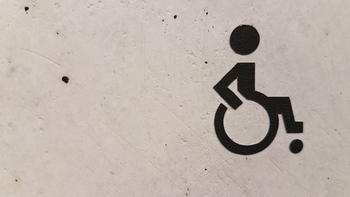Higher education in Sweden

Studies at first and second cycles at universities and university colleges are regarded as higher education. HVE programmes or studies at folk high schools are also regarded as higher education.
In Sweden, you can study on a higher education programme or course at a university (universitet), a university college (högskola), or in an HVE institution (yrkeshögskola). There is little difference between universities and university colleges. At a university, you can always apply for doctoral (third-cycle) education when you have finished your bachelor’s (first-cycle) education, but this is not always possible at a university college.
However, there are big differences between studying at an HVE institution and at a university/university college. Here are the most important differences:
University college/University
- Number of years to degree: 4-5
- Vocational study focus: Depends on programme
- Theoretical level: High
- Teaching hours/week 2-10
- Contact with working life: Little or no contact
- LIA/work placement: Usually none
Higher Vocational Education
- Number of years to final diploma: 1-2
- Vocational focus: Yes
- Theoretical level: Medium-high
- Teaching hours/week: 18
- Contact with working life: Great contact
- LIA/work placement Yes
Three levels of Swedish higher education at university/university college
In higher education in Sweden, you can choose to study on a set programme (programstudier) or compile an education by taking a number of individual courses (fristående kurser). A higher education programme is divided into three levels:
- First-cycle education (grundnivå)
- Second-cycle education (avancerad nivå)
- Third-cycle education (forskarutbildning)
A bachelor’s degree (kandidat, bachelor) in Sweden is offered at first-cycle level. A master’s degree at second-cycle level extends over two years. There are also shorter (one year) educational programmes and courses at master’s level.
In the humanities, social sciences and natural sciences, students usually build their own educational programme, while it is more common to follow a set programme for legal, technical and medical subjects.
Professional education is offered as complete programmes with their own titles. Professional education is a programme with a focus on a specific profession offered at university colleges and universities, and often contains both theoretical and practical elements. Teacher training is an example of an academic professional education.
If you have an upper secondary qualification from another Nordic country, you may apply for higher education programmes and courses in Sweden. On Antagning.se, you set up a user profile, choose courses and/or programmes, and submit your application. On Antagning.se you can also read more about the entry requirements and which documents you must upload or send.
You can search for a programme/course and relevant educational institutions on the Antagning.se website. You can choose individual courses or complete programmes. Place your preferred programme or course first in the application. You may change your selections up until the deadline for applications.
There are a number of important dates to keep an eye on before and during the admission period. At Antagning.se you can see what dates apply for different terms.
Remember to accept or decline the offers you receive. The university or university college to which you are admitted will contact you closer to the start of the programme or course.
You must have certain prior learning in order to be admitted to a higher education programme/course in Sweden. On Antagning.se and the websites of the educational institutions you can find information about the entry requirements for the programme/course for which you want to apply.
There are different types of entry requirements for higher education programmes/courses in Sweden. The requirements are divided into general entry requirements (behörighet) that apply for all higher education programmes and courses, and specific entry requirements (särskild behörighet) that apply for certain programmes and courses that require further prior learning.
You satisfy the general entry requirements if you have an upper secondary education qualification that qualifies you to higher education studies in the country of education. If you do not satisfy the general entry requirements, you may supplement your qualifications through adult education.
Prior learning requirements vary from programme to programme. Generally speaking, you must have passed certain subjects at upper secondary level.
When there are more applicants than places for a programme/course, places are allocated on the basis of different selection groups (betygsgrupper). Regardless of your study background, you must show that you satisfy the general entry requirements.
You can apply to a higher education programme/course via several selection groups if you can confirm that you satisfy the general entry requirements in several ways.
- Grade Group 1 (Direct Group - BI) is for applicants with upper secondary qualifications that satisfy entry requirements without supplementary studies.
- Grade Group 2 (Supplementary Group - BII) is for applicants who have supplemented their qualifications with adult education studies (Komvux) in Sweden to fulfil the entry requirements.
- The Swedish Scholastic Aptitude Test (högskoleprovet) is for you if you are uncertain about whether you can apply in group BI. You can take the test and apply using the results. The test is held at many higher education institutions in Sweden twice a year. If you get a poor result in the test, the educational institute will instead look at the average grade from your upper secondary qualification.
You can read about application for and times of the Swedish Scholastic Aptitude Test on Studera.nu. You can prepare for the test by going through earlier tests, which you can find on Studera.nu or on Högskoleprovguiden.
Nordic citizens do not pay application or tuition fees to study in Sweden. If you live in the EU/EEA area, public education is free in Sweden, but private educational institutions may charge fees.
You do not pay application or tuition fees at a university or university college if you:
- are a Swedish citizen
- have a permanent residence permit in Sweden
- have a temporary residence permit (for reasons other than studies) in Sweden
- are a citizen in an EU or EEA country or Switzerland.
Information about your citizenship and residence status will be retrieved from the Swedish Tax Agency (Skatteverket) and the Swedish Migration Agency (Migrationsverket) when you apply for a higher education programme or course at Antagning.se.
You must pay for costs of copying documents and compendiums, equipment for information searching, and copying at the library, costs of any excursions, such as travel or similar, and fees to the student association.
If you are a citizen of a country outside the EU, EEA or Switzerland, you must pay application and tuition fees for studies at both first cycle and higher levels. The application fee is paid when you apply for one or more educational programmes or courses.
Universities and other higher education institutions set the tuition fees, and also administer payment of these fees. You can find information about tuition fees and exceptions from the regulations at Antagning.se.
It is important to know how long a programme or course is. In Sweden higher education is measured in university credits (högskolepoäng). You get credits for every course or programme on which you study at university or university college. In Swedish, credits are abbreviated as hp (högskolepoäng). You use these credits to achieve your higher education qualification.
If you study full time, a course of 7.5 credits corresponds to 5 weeks of studies, 15 credits correspond to 10 weeks of studies, 30 credits is one term (20 weeks), and 60 credits is one year of studies (40 weeks).
You can take up to 45 credits in one term. The higher educational institutions provide information about the goals of an education programme and the number of credits in a syllabus for each individual course.
A bachelor degree is 180 credits (3 years), which corresponds to 180 in the ECTS in other EU countries. ECTS (European Credit Transfer System) is a common European standard that shows the expected work load in terms of time for each course or programme.
Credits are awarded to students after exams, in order to facilitate transfer of credits between different programmes and to make it easier for different educational institutions to recognise qualifications.
In Sweden there are student organisations called student unions (studentkår). These are interest organisations run by students for students. Everyone studying at a university or university college in Sweden is entitled to join a student union.
You can contact your educational institution for more information. You can also read more on the website of the Swedish National Union of Students.
Higher vocational education in Sweden
Higher vocational education (HVE) programmes are generally 1-2 years in Sweden. HVE is offered at both private and public institutions. All programmes are approved by the Swedish National Agency for Higher Vocational Education (Myndigheten för Yrkeshögskolan) and are reviewed regularly.
The programmes are run in collaboration with industry, and are offered in sectors where there is a shortage of skilled labour. The programmes are at post-upper secondary level and provide skills in professional areas in, for example, building and construction, IT, agriculture, media, healthcare and care, technology, restaurants, and business finance and administration.
Higher vocational programmes are called HVE (YH in Swedish) programmes. In an HVE institution, theory is combined with practice called workplace training (LIA, Lärande i arbete) or Learning in a work environment
The content in HVE programmes is based on knowledge that has developed through production of goods and services. The aim is that the programmes will lead to a job or self-employment directly after you have taken the diploma. The content and specialisations of the HVE programmes vary according to labour market needs.
There are two diplomas when you have completed an HVE programme in Sweden:
- Higher Vocational Educational Diploma
- Advanced Higher Vocational Educational Diploma
Completion of a programme of at least one year results in a Higher Vocational Educational Diploma (Yrkeshögskoleexamen). Completion of a programme of at least two years results in an Advanced Higher Vocational Educational Diploma (Kvalificerad yrkeshögskoleexamen). This is a nationally approved and quality-assured diploma, recognised by most companies.
An HVE programme that can lead to a diploma must be at least one year long. If your programme does not lead to a complete diploma, you can instead receive an HVE certificate.
You can find information about the individual programme areas and HVE institutions on the website of Higher Vocational Education (Yrkeshögskolan).
In Sweden it is the HVE schools that handle applications to higher vocational education. There are many different educational providers (schools), and each manage their own admissions to courses and programmes.
Contact the school directly if you have any questions about applications and entry requirements for admission to the programme you are interested in. Note that application deadlines vary from programme to programme.
Exactly what your application must include varies between schools and programmes. You can get detailed information about the requirements from the educational provider.
Examples of documentation that schools may ask for:
- Grades
- Reason for applying
- Certificate of employment
- Work samples
In order to be accepted on an HVE programme (yrkeshögskoleutbildning) in Sweden, you must fulfil the entry requirement (behörighet). This means you must have an upper secondary qualification, or equivalent knowledge, skills and expertise.
You fulfil the entry requirements and are thereby eligible if you satisfy any of the following:
- You have a school-leaving diploma (slutbetyg) from a national or special programme at upper secondary level with at least the lowest grade, pass (godkänt).
- You have a school-leaving diploma (slutbetyg) from adult education at upper secondary level with at least the lowest grade, pass (godkänt).
- You have Swedish or foreign educational qualification that correspond to the requirements in point 1 or 2.
- You live in Denmark, Finland, Iceland or Norway and fulfil the entry requirements for study programmes equivalent to the Swedish HVE programmes.
- You have acquired, through Swedish or foreign education, practical experience or some other way, the competence to study on the programme.
For many programmes, there are also requirements about specific prior learning. For example, you must have passed exams in certain subjects at upper secondary school, or have equivalent knowledge, skills and expertise, or you must have relevant vocational experience.
The entry requirements do not only consider formal qualifications, but also the applicant’s actual skills and expertise.
In Sweden, the programme duration is expressed in HVE credits (YH-poäng), where five credits correspond to a week of full-time studies. 100 credits correspond to half a year of full-term studies, 200 credits correspond to one year of full-time studies, and 400 credits correspond to two years of full-time studies. Many HVE programmes are two years, and comprise 120 ECTS.
The credit system for HVE programmes differs from that applied at universities. You cannot automatically transfer credits from an HVE programme if you later want to study at university. It is up to every university to decide on this.
Here, you can see HVE credits in relation to the credit system at universities and university colleges:
- An educational programme of 0.5 years gives 100 HVE credits / 30 university credits.
- A programme of 1 year gives 200 HVE credits / 60 university credits.
- A two-year programme gives 400 HVE credits / 120 university credits.
- A three-year programme gives 600 HVE credits / 180 university credits.
Assessment of grades from other countries
You do not translate your grades when you apply for a higher education programme/course in Sweden.
On the website of the Swedish Council for Higher Education (Universitets- och högskolerådet, UHR), you can read about how your upper secondary grades from another Nordic country are converted to Swedish grades.
Language requirements for higher education studies in Sweden
If you want to apply for higher education in Sweden, you must have completed upper secondary education. In addition, you must have good proficiency in Swedish and English. If you have an upper secondary education qualification from another Nordic country, this is a confirmation that you meet the requirement for proficiency in Swedish at a certain level.
Most courses are taught in Swedish. Not all higher education institutions allow students to write in another Scandinavian language when they submit written assignments or take exams. If a subject is taught in English, the examination is also held in English.
Students from the other Nordic countries are often permitted to take the examination in one of the Scandinavian languages, in both written and oral subjects. Contact the study guidance counsellor for the educational programme/course you want to apply to in Sweden for more information about whether you can take examinations in another Scandinavian language.
Exchange student in Sweden
If you do not wish to do all your programme in Sweden, but part of it, there are several ways to do this.
First, you can arrange it through an agreement with your educational institution in your home country. Contact the institution in which you are studying, or its international office, for information about any exchange agreements.
Alternatively, you can apply for an exchange if your educational institution does not have a formal agreement with the institution in Sweden you are interested in. Contact the educational institution you want to apply to, and ask if they can accept you as a guest student or a ‘free mover’ for a term or a year. If the subjects are to be approved in your education plan, the educational institution in your home country must approve, both in advance and on completion, the subjects you are taking in Sweden.
More information
When you are planning to study in Sweden, it is important to find out about things like student accommodation, student finance, and recognition of Swedish education in the other Nordic countries. You can find a lot of valuable information in the Info Norden study guides.
Please fill in our contact form if you have any questions or if you have encountered an obstacle in another Nordic country.
NB! If you have questions regarding the processing of a specific case or application, or other personal matters, please contact the relevant authority directly.




